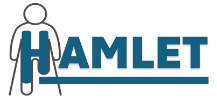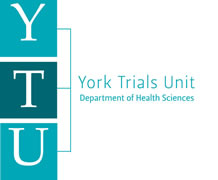THrough knee AMputation’s impact on Quality of Life compared to AbovE Knee AmputaTion: The HAMLET Trial
Background
Every two hours, someone in the UK has a leg removed and their life is changed forever. When undertaking a major lower limb amputation (MLLA), surgeons will try and preserve the knee joint if possible. If this is not possible, then an above knee amputation (AKA) is usually performed. However, an amputation through the knee joint is an alternative to an above knee amputation. Compared to an above knee amputation, a through-knee amputation (TKA) may result in superior outcomes and improved rehabilitation, such as easier control of an artificial leg or balance in a wheelchair, but may also lead to issues with wound healing.
Patients report positive and negative experiences with both above and through knee amputations. High quality research is lacking and evidence to clearly define which of these two amputations results in the best outcomes for patients is urgently needed.
The Study
HAMLET is a multicentre, two-arm, non-blinded, pragmatic, parallel group, randomised controlled superiority trial with the aim of assessing the clinical and cost effectiveness of TKA compared to AKA in patients requiring MMLA, but who are unsuitable for a BKA.
Patients who are aged 18 years or older and requiring unilateral MLLA will be screened for eligibility and invited to take part in the study.
Setting
Adult patients who are unable to have a below knee amputation will be invited to participate from hospitals across the NHS in the UK that both provide MLLA care and have the facilities to support research activity. All participating hospitals will have the necessary resource and capability to perform both AKA and TKA surgery.
Planned sample size
386 participants (193 in each group)
Intervention
Through Knee Amputation (TKA) - defined as any technique of amputation within the vicinity of the knee joint that removes the leg below the knee joint, but preserves and reattaches the patella tendon.
Comparator
Above Knee Amputation (AKA) - defined as femoral division at 10-15cm above the superior margin of the patella with a standard anterior and posterior fish-mouth flap incision.
Primary outcome
The primary outcome is the quality of life collected using the EuroQol 5 Dimensions score (EQ-5D-5L) at 24 months post randomisation
Secondary outcomes
Secondary outcomes will include qualitative, surgical and rehabilitation outcomes, as well as longer term social and functional outcomes and economic evaluations
Patient and Public Involvement
This study has been designed alongside people with amputations. In depth discussions were held with a diverse group of people with amputations, who provided crucial input for the development of this research. They identified the best tool for assessing Quality of life, based on ease of use and relevance to living with an amputation, and also provided advice regarding the length of follow up. We have engaged with the Limbless Association and have direct links to a wide network of Vascular Special Interest Groups that have helped us to maximise the pool and diversity from which we can access patient and carer contributors. Our patient co-applicants will work throughout the study to guide processes and co-design patient facing materials
This study is funded by the NIHR Health Technology Assessment Programme (NIHR157343) The views expressed are those of the author(s) and not necessarily those of the NIHR or the Department of Health and Social Care.
Privacy Notice: How we use your research data
Funding
| Funders(s) | National Institute for Health Research (NIHR) |
|---|---|
| Start Date | June 2024 |
| End Date | August 2030 |
| Sponsor | Hull University Teaching Hospitals NHS Trust |



